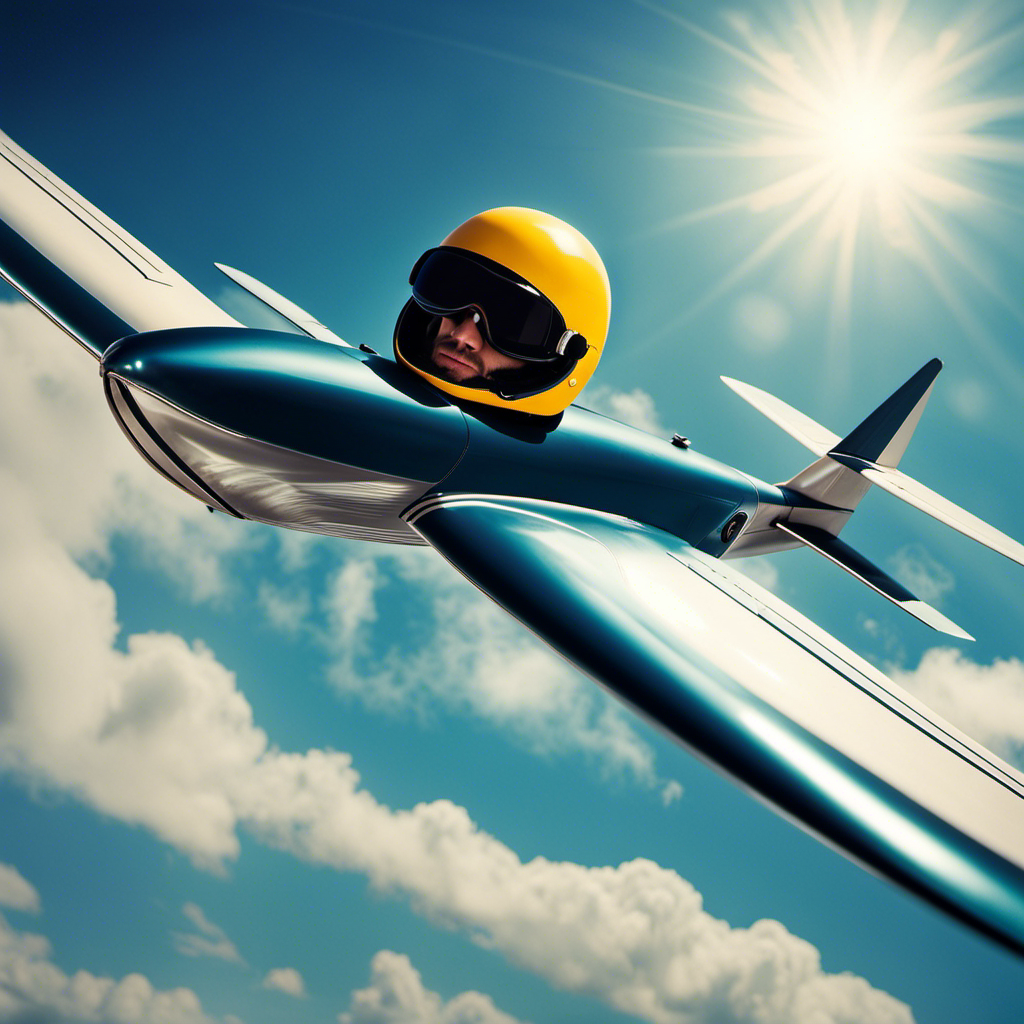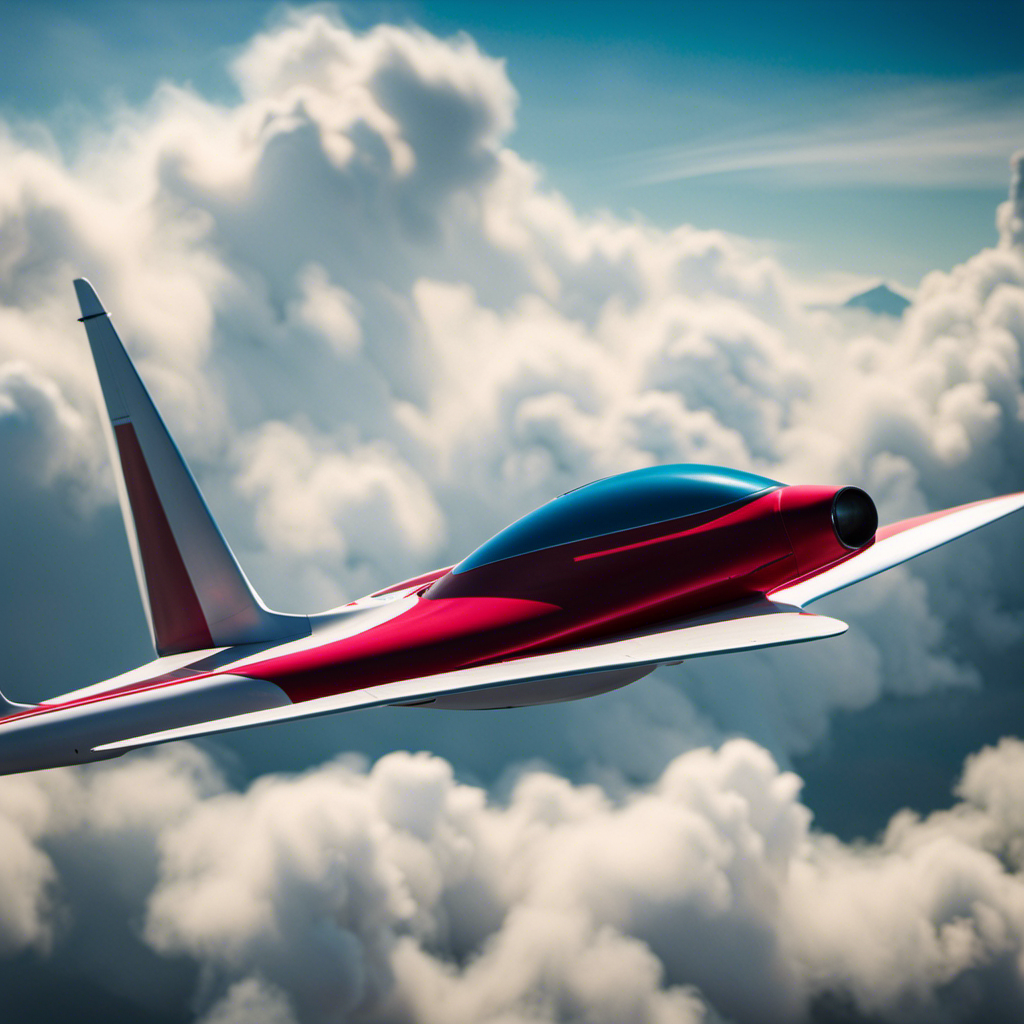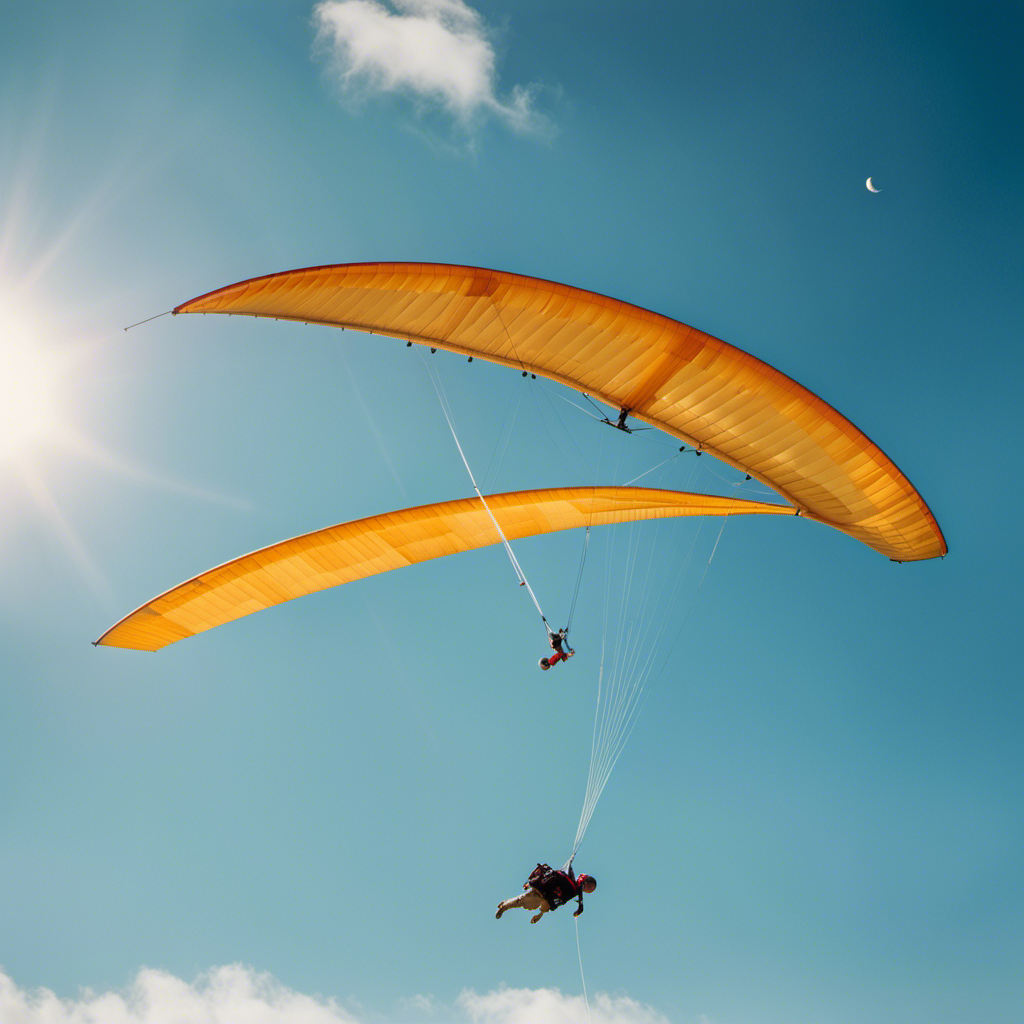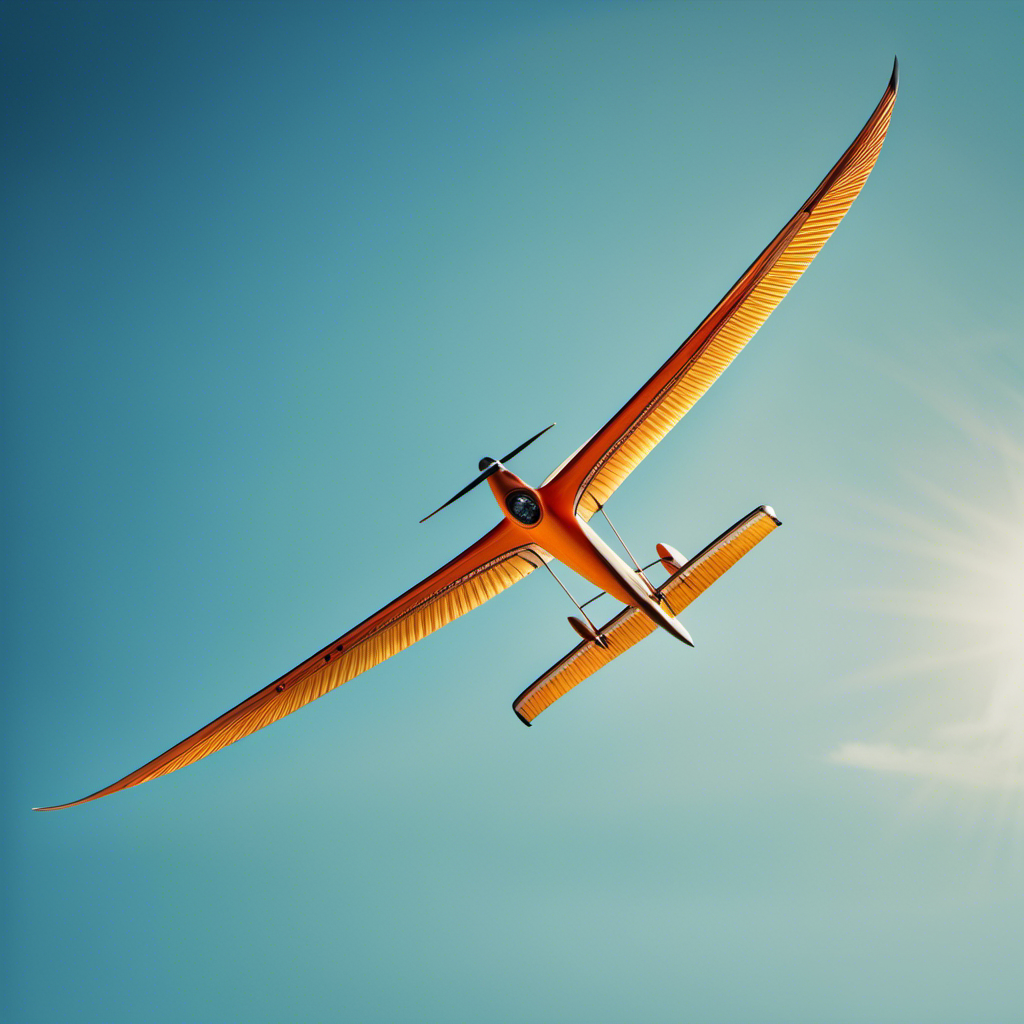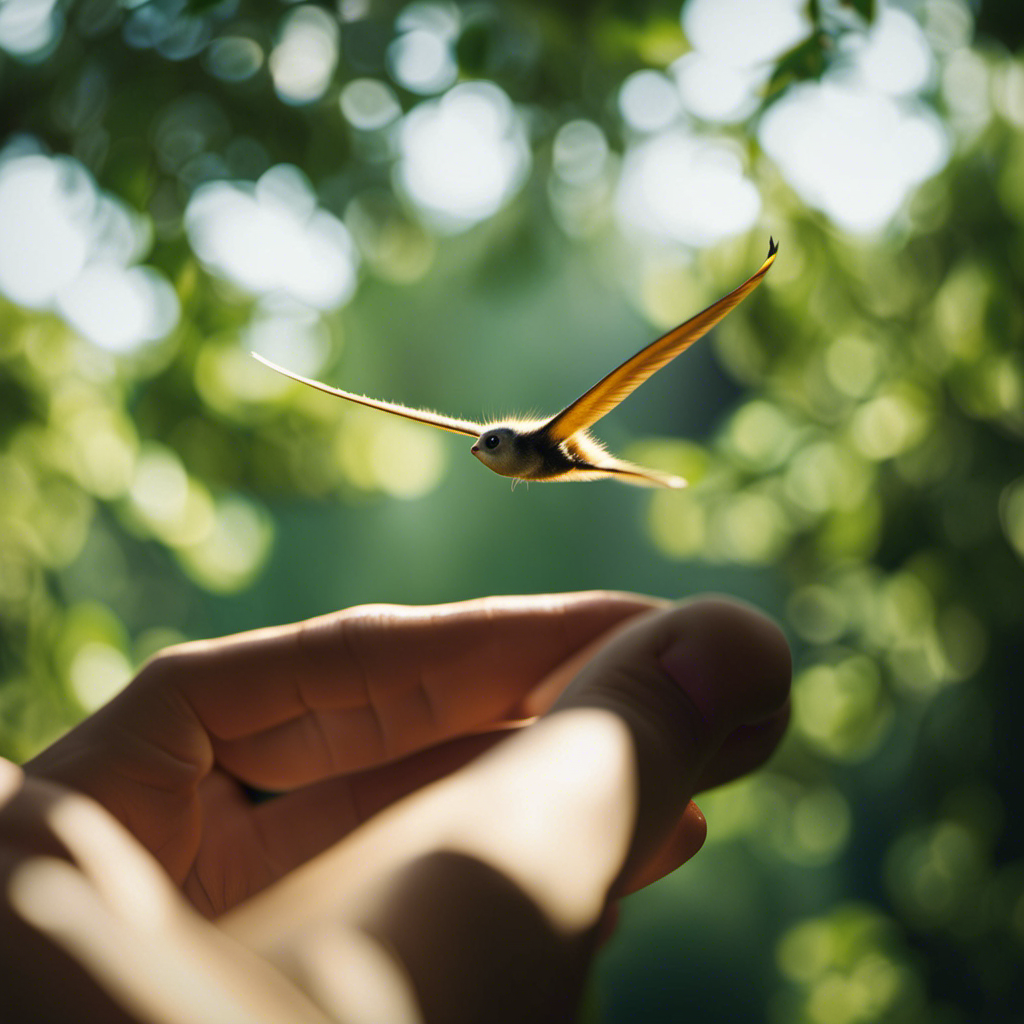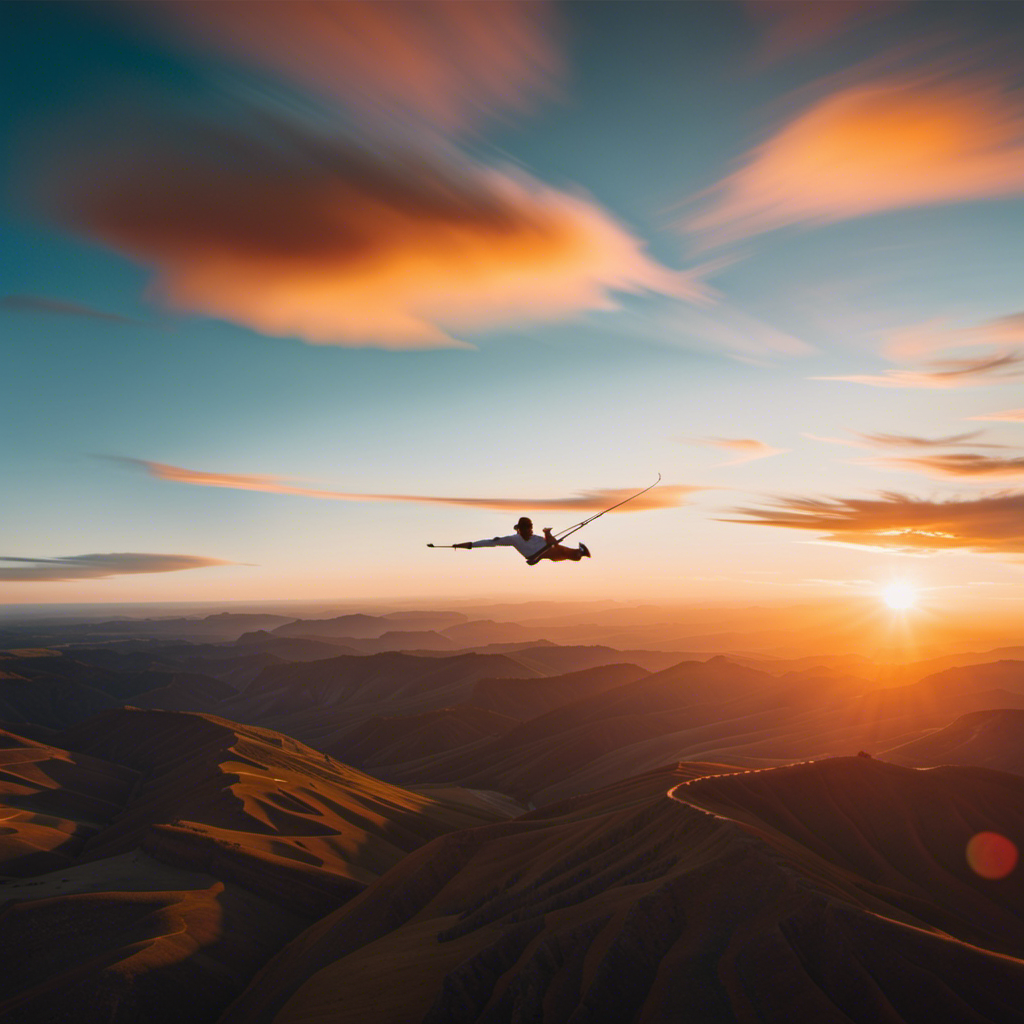When I ascend into the heavens aboard a glider, the significance of my clothing cannot be overstated for both safety and comfort during the flight. Appropriate attire and equipment are key, enabling me to be ready for any climatic challenges while complying with safety standards.
In this article, I’ll delve into the importance of proper footwear, suitable clothing layers, and protective gear. We’ll also explore the significance of sun protection and accessories for convenience.
Join me as we explore what to wear when gliding, from head to toe.
Key Takeaways
- Clothing for gliding should include a lightweight, moisture-wicking base layer and a breathable outer layer for protection from the elements.
- It is important to choose clothing that is comfortable, breathable, and allows for ease of movement.
- Accessories such as gloves, hat, and suitable gliding footwear should be worn for warmth, comfort, and safety.
- Dressing appropriately for different weather conditions, such as using moisture-wicking clothing in hot weather and layering for warmth in colder conditions, is essential for regulating body temperature and protecting against the elements.
The Importance of Proper Footwear
Wearing the right footwear is crucial when gliding. Suitable footwear ensures both comfort and safety during the activity. When it comes to gliding, it is important to wear shoes that provide proper support and traction. Slip-on shoes or sandals should be avoided, as they do not offer the necessary stability. Instead, opt for closed-toe shoes with a sturdy sole, such as hiking boots or athletic shoes. These types of footwear provide adequate grip and protect your feet from potential injuries.
Additionally, make sure that your shoes are the right size and fit snugly to prevent any discomfort or blisters.
Now that we have covered the importance of suitable footwear, let’s move on to discussing suitable clothing layers for gliding.
Suitable Clothing Layers
Layering your clothing is important for gliding to ensure you stay comfortable and warm during your flight. When choosing suitable fabric types, it is crucial to opt for materials that are moisture-wicking and breathable, such as polyester or merino wool. These fabrics will help regulate your body temperature and keep you dry, even when exerting yourself during flight.
As for layering techniques, start with a moisture-wicking base layer to draw sweat away from your body. Next, add insulating layers, such as a fleece or down jacket, to provide warmth. Finally, top it off with a windproof and waterproof outer layer to protect against the elements.
By layering your clothing properly, you can easily adjust your attire to accommodate changing weather conditions and maintain optimal comfort throughout your gliding experience.
Now, let’s move on to the importance of protective gear.
Protective Gear
When it comes to protective gear, it’s essential to choose equipment that is specifically designed for gliding activities. One of the most crucial pieces of protective gear is the helmet. Helmets play a vital role in safeguarding your head from potential impacts and injuries during gliding. They are designed to absorb and distribute the force of any impact, reducing the risk of head trauma.
Additionally, gloves are of utmost importance when gliding. They provide a firm grip on the glider’s controls, ensuring precise movements and preventing hand fatigue. Gloves also protect your hands from the elements, such as cold temperatures and wind chill.
As we consider the weather conditions, it is crucial to assess the temperature, wind speed, and precipitation to determine the appropriate clothing layers for a comfortable and safe glide.
Consider the Weather Conditions
It’s important to assess the weather conditions before gliding to ensure a safe and comfortable experience. When preparing for a gliding adventure, dressing appropriately is crucial. Here are three key factors to consider when selecting suitable attire:
-
Layering: Opt for multiple layers of clothing that can be easily added or removed based on the temperature. This allows you to adjust your clothing to stay comfortable throughout the flight.
-
Windproof and Waterproof Clothing: Gliding exposes you to the elements, so it’s essential to wear windproof and waterproof outerwear. This will keep you protected from strong winds and unexpected rain showers.
-
Comfortable Shoes: Choose closed-toe shoes with good traction to ensure stability during takeoff and landing. Avoid wearing sandals or flip-flops as they may not provide the necessary support.
Considering these aspects will help you dress appropriately for the weather conditions and ensure a pleasant gliding experience.
Now, let’s discuss the importance of sun protection while gliding.
Sun Protection
To protect your skin from harmful UV rays, applying sunscreen with a high SPF is crucial during your gliding adventure. Sunscreen application is an essential step in ensuring your skin remains protected throughout the day. Make sure to apply a generous amount of sunscreen to all exposed areas of your body, including your face, neck, arms, and legs.
Additionally, wearing appropriate headwear, such as a wide-brimmed hat or a cap with a visor, can provide extra protection for your face and scalp. This will help shield you from direct sunlight and reduce the risk of sunburn.
Now, let’s move on to the next aspect of your gliding outfit: comfortable clothing.
Comfortable Clothing
When it comes to gliding, it’s important to wear clothing that allows for ease of movement. Loose-fitting clothes are ideal as they provide the necessary flexibility and range of motion.
It is crucial to avoid restrictive or tight clothing, as these can impede your movements and hinder your performance during gliding activities.
Loose-fitting clothes for ease of movement
Make sure you’re wearing loose-fitting clothes so you can move easily while gliding. When it comes to suitable fabrics, opt for materials that are breathable and stretchable. Fabrics like spandex or polyester blends are great choices as they allow for maximum flexibility and comfort.
Additionally, consider your body type when selecting clothing for gliding. If you have a curvier figure, look for clothes that provide ample room and support in the right places. On the other hand, if you have a slimmer build, choose clothing that enhances your natural movements without restricting them.
Avoiding restrictive or tight clothing is crucial to ensure a smooth gliding experience. It’s important to allow your body the freedom to move and flow effortlessly without any constriction.
Avoiding restrictive or tight clothing
Opt for loose-fitting clothes that allow for maximum flexibility and comfort while gliding. When it comes to gliding, the right clothing can make a significant difference in your performance and overall experience. Here are three key considerations for choosing the right attire:
-
Footwear options: Opt for shoes that provide good support and grip. Look for lightweight and breathable materials that allow your feet to stay cool and comfortable throughout the activity. Avoid wearing sandals or open-toe shoes as they may not provide the necessary protection or stability.
-
Clothing materials: Choose fabrics that are moisture-wicking and quick-drying to keep you dry and comfortable during your gliding adventure. Synthetic materials like polyester or nylon are ideal as they allow for better breathability and are less likely to absorb sweat.
-
Avoid restrictive or tight clothing: Opt for loose-fitting attire that allows for unrestricted movement. Avoid wearing tight jeans or clothing that may restrict your range of motion, as this can hinder your gliding experience.
Considering these factors will help you optimize your gliding experience. Now, let’s delve into the importance of considering safety regulations.
Consider Safety Regulations
Remember to always follow safety regulations when gliding, as they are put in place to protect you and others.
Safety equipment plays a crucial role in ensuring a safe and enjoyable gliding experience. Before taking off, it is important to check that your glider is well-maintained. Regular inspections and maintenance are necessary to ensure that all components, such as the wings, control surfaces, and landing gear, are in proper working order.
Additionally, safety equipment like helmets, harnesses, and emergency parachutes should be worn at all times to minimize the risk of injury in case of an emergency.
Now, let’s move on to discussing accessories for convenience, which can greatly enhance your gliding experience.
Accessories for Convenience
After considering safety regulations, it’s important to focus on the accessories that will make your gliding experience more convenient.
When it comes to accessories for warmth, a good pair of gloves and a hat are essential. They will help protect your extremities from the cold temperatures at higher altitudes. Additionally, investing in a thermal base layer and a windproof jacket will provide extra insulation and keep you comfortable throughout the flight.
As for accessories for navigation, a reliable GPS device is crucial for keeping track of your location and ensuring you stay on course. It’s also wise to have a compass as a backup in case of any technological failures.
By equipping yourself with these accessories, you’ll be well-prepared for any conditions and have a smoother gliding experience.
Now, let’s move on to the next section about dressing for flight duration…
Dressing for Flight Duration
To stay comfortable during longer flights, it’s important to wear layers that can be easily adjusted based on changing temperatures. Here are four essential items for dressing appropriately during a flight:
- A lightweight, moisture-wicking base layer is crucial for keeping you dry and comfortable.
- A mid-layer, such as a fleece or down jacket, provides insulation when the cabin gets chilly.
- A breathable outer layer, like a windbreaker or waterproof jacket, protects you from drafts or rain.
- Comfortable and breathable pants or leggings allow for easy movement.
By wearing these layers, you can easily adapt to the changing temperatures in the cabin and ensure your comfort throughout the flight.
Now, let’s shift gears and discuss personal preference and comfort when choosing the right attire for gliding.
Personal Preference and Comfort
When it comes to choosing clothing for gliding, personal style plays a crucial role in ensuring a comfortable and enjoyable experience. Selecting attire that reflects one’s individual taste not only adds a personal touch but also boosts confidence during the gliding adventure.
Additionally, it is essential to prioritize comfort by opting for clothing that allows freedom of movement and is suitable for the weather conditions at hand.
Choosing clothing based on personal style
Even if you’re gliding, it’s important to choose clothing that reflects your personal style. Your fashion choices can make a statement and enhance your overall gliding experience.
Here are some considerations for choosing the right clothing based on your personal style:
-
Comfort: Prioritize clothing that allows for ease of movement and doesn’t restrict your gliding abilities.
-
Breathability: Opt for materials that are breathable and moisture-wicking to keep you cool and dry during your gliding sessions.
-
Protection: Select clothing that offers protection from the elements, such as UV rays, wind, and cold temperatures.
-
Visibility: Consider wearing bright or reflective clothing to ensure visibility to other gliders and potential hazards.
-
Layering: Choose clothing that is versatile and allows for layering, so you can easily adjust to changing weather conditions.
By selecting clothing that aligns with your personal style, you can feel confident while gliding and express yourself through your fashion choices.
Transitioning into the next section, let’s now explore how to ensure comfort for an enjoyable gliding experience.
Ensuring comfort for an enjoyable gliding experience
After considering personal style, it’s important to ensure comfort for a truly enjoyable gliding experience.
One essential aspect to address is suitable gliding footwear. When selecting footwear for gliding, it’s crucial to prioritize comfort and functionality. Look for shoes that provide adequate support, flexibility, and grip. Opt for lightweight and breathable materials to keep your feet cool and prevent discomfort during long gliding sessions.
Additionally, dressing appropriately for different weather conditions is imperative. In hot weather, choose moisture-wicking and breathable clothing to help regulate body temperature and prevent overheating. In colder conditions, layering is key to maintain warmth while allowing for flexibility of movement. Consider wearing a thermal base layer, insulating mid-layer, and a windproof outer layer to protect against the elements.
Frequently Asked Questions
Are there any specific safety regulations or guidelines to follow when choosing what to wear for gliding?
When choosing clothing for gliding, it is crucial to adhere to safety regulations and clothing guidelines. These regulations ensure that the clothing worn provides adequate protection and does not pose any risks during flight.
What are some accessories that can enhance convenience during a gliding session?
Enhancing comfort during gliding requires must-have accessories. A proper helmet and harness ensure safety, while sunglasses shield against glare. The right footwear, like sturdy boots, provides stability and grip during takeoff and landing.
How should one dress according to the duration of the flight?
Dressing appropriately for a gliding flight involves considering weather conditions and using layering techniques. It is important to dress in layers that can be easily adjusted to regulate body temperature during the duration of the flight.
Is personal preference and comfort a significant factor to consider when selecting gliding attire?
Personal style and comfort are important when selecting gliding attire. Weather conditions should also be considered to ensure appropriate clothing is worn. Personal preference and comfort contribute to an enjoyable and safe gliding experience.
What are some commonly overlooked aspects of gliding attire that can affect the overall experience?
Overlooked aspects of gliding attire, such as proper footwear, can have a significant impact on the overall experience. Wearing appropriate shoes with good traction is essential for a safe and comfortable glide.
Conclusion
In conclusion, when it comes to gliding, the right attire is crucial for a safe and enjoyable experience. Just like a well-oiled machine, every piece of clothing and gear plays a vital role in ensuring a smooth flight.
From sturdy footwear that keeps your feet firmly planted to protective layers that shield you from the elements, every aspect must be considered.
So, remember to dress for the occasion, like a pilot preparing for takeoff, and let the sky become your runway.
With a heart that soars as high as the skies, Aria, affectionately known as “Skylark,” is the driving force behind Soaring Skyways. Her journey into the gliding world began as a young dreamer gazing up at the soaring birds, yearning to experience the weightlessness and freedom they embodied. With years of experience both in the cockpit and behind the scenes, Aria’s commitment to the gliding community is unwavering.
